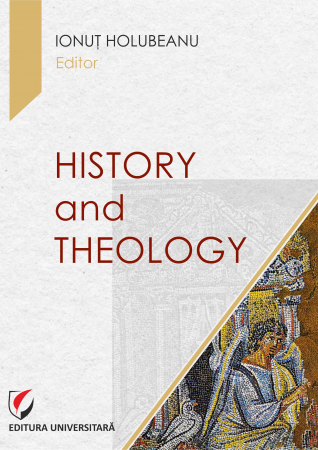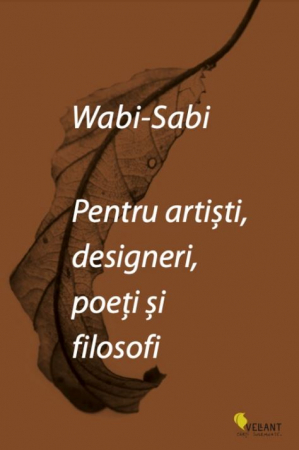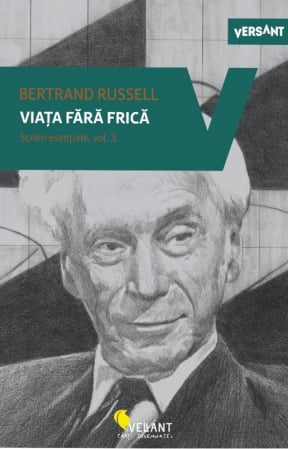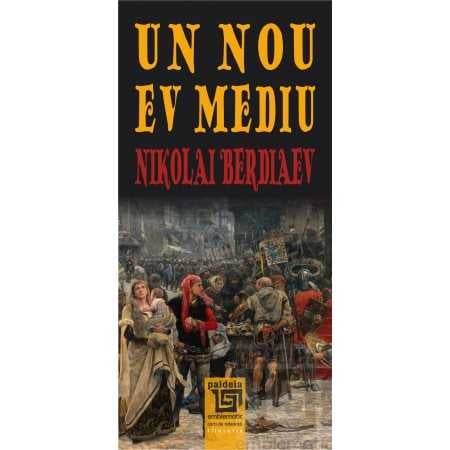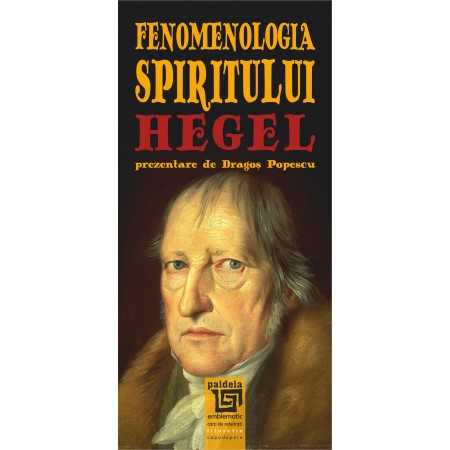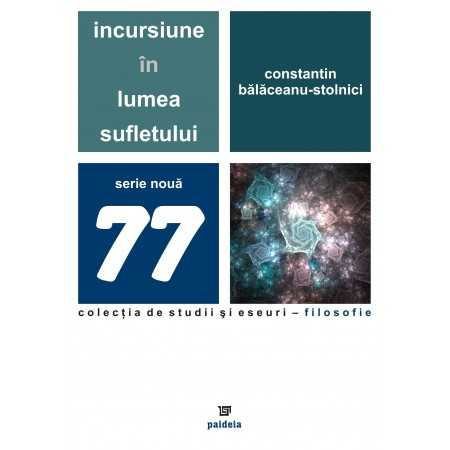Publisher: Editura Universitară
Author: Ionut Chircalan
ISBN: 978-606-28-1251-5
DOI: https://doi.org/10.5682/9786062812515
Publisher year: 2021
Edition: I
Pages: 288
- Description
- Download (1)
- Authors
- Content
- More details
- Reviews (0)
Much has been written about the Areopagite writings (their theology and philosophy) lately. Theses have even been prepared for obtaining the title of doctor, certainly in theology, but also in philosophy.
It is good that they also entered the order of interest of philosophers (historians of philosophy, even ethicists) first because, although with theological dominance, the Areopagite writings are also a repository of a great philosophy. In fact, for the Eastern branch of Christianity, according to the Apologies and Dialogue with the Jew Tryphon of St. Justin the Martyr and the Philosopher, the Areopagite writings are, perhaps, to a large extent, the foundation for Christian philosophy.
Second, alternative reading is a safe and straightforward path to dialogue. The inclination on the same text, from different situations, does not separate, by this, for the simple reason that one reading takes into account the dominance, and another from the "Second Game" of the work. Because this double settlement also enters the logic of the open work. Having a dominance: theological, philosophical, poetic, scientific, any book is of secondary interest for other readings-interpretations. Only from the space of the first Christian writings can the Areopagic Corpus, for example, be read, in its entirety, in the philosophical and ethical grid, and the beauty of language, its particularities, coming from the intense apophatism and from a grammar, I would say, of superlatives, make of he is also a monument of language and style.
Thus read, the Corpus is a guarantee of well-conducted dialogue through the very rule of the method, provoking and making it possible.
In our culture, translated and commented by Cicerone Iordachescu and Teofil Simensky, earlier, subtly and artistically evoked by Nichifor Crainic, they found in Father Staniloae an exeget (through a new interpretation) over time. Accompanied by the comments of Saint Maximus the Confessor or John of Scythopolis (if the former or the latter is the author), the edition of Father Staniloae brings something extra. But what individualizes it is the imprint of the translator, a theologian with an unmistakable personality.
Ionut Gh. Chircalan undertakes an extensive research of the Father's contribution, but not, I would say, as an end in itself. "The purpose of this thesis, warns the researcher, is to propose after the analysis a constructive model of interpretation of areophageal writings and some elements that contribute to the orthodox understanding of the reality and meaning of God's presence in creation for contemporary man."
We read for something: the next target is, no doubt, the application text, but the other, the final one, is its conversion into arguments for a new construction. We read intentionally, we read to think with the text on which we lean in another referential.
Introductory, with science and measure, the young researcher enters into the shackles of the identity of the author of the Corpus, in a way the "Homeric problem" in primary Christianity. He moves cautiously among many hypotheses, I do not say that they are unimportant, but not the biggest. After all, whoever was the author matters less; the main thing is that we have the work. Conversely, it would have been worse.
Besides, the great work, close to the upper part of the greatness, hides the author. Who wrote the Iliad and the Odyssey? Homer? There are doubts about Shakespeare, more towards us.
The presence of the Corpus in the epoch matters even less. Each historical time has its own grid of interpretation, so the text itself makes history. But, even introductory, it is not a problem without interest.
In cap. III of Part I, the controversies "on the Christian formation of Saint Dionysius" are investigated, taking into account his approach to philosophy, however, to tradition in Christian thought.
The first Christian writers were of Greek culture (Greek and Romanian, some); bringing philosophy into the Christian space did not desecrate the Christian idea, but integrated tradition into its body. In fact, something that St. Justin, Origen, and Clement had already done was, in a way, one of showing that the new religion is like a cultural crown. Elective assimilation, no doubt, is not distorted when it is well conducted. Therefore, perhaps, indeed the excess of philosophy will be led to heresies, but only the excess and insufficiency of critical supervision. And maybe weakening or weakening faith.
The Areopagite corpus was written at a time when in Athens post-ancient (surviving) Greek philosophy was dominated by Proclean Neoplatonism. If and how much the Corpus itself brings to the Neoplatonist, the discussion does not include the influence, but the problem, up to a point and in a certain direction, common. "Pagan" Neoplatonism (from Plotinus to Proclus) was not like a revival of doctrinal Platonism, but its organization around the great problem that brings metaphysics closer to theology: how do we think the transition from One to multiple (from being to existence) if not through division, nor through transformation into the self does it pass into creation.
The researcher is weighed in court, avoiding both uncritical acceptances and rejections as well. Although it seems to me, perhaps, too cautious. But the problem is thorny.
But all this is rather introductory. The strong part of the thesis begins with the second chapter (of the first part), but especially with the second part.
The author does not refer to Father Staniloae as an interpreter (translator and commentator) or not in the first place. In fact, Father Staniloae was too personal not to make a translation himself. The imprint of his theology is pressed, which does not spoil the originality of the text. Any translation, in fact, is the work of re-creation, which means bringing in the language and logic of time. Father Staniloae translated for our time.
In particular, in the reading of Father Staniloae, the Corpus reveals the intense personalism of Christianity, a dominant idea in the theology of the Father. In fact, if I realize correctly, this is the orderly idea of the thesis in its strongest part. In this way the thesis acquires organicity and at the same time shows the danger of a comment to comment. The thesis, therefore, is not only of exegesis, but also of systematic theology, as soon as the author discusses extensively the problem of personalism.
One last issue related to the translation of Father Dumitru Staniloae: with some "adventures", his translation could appear posthumously, which means that without reviewing its author. Perhaps Father Staniloae, very personally, brought the reference text too close to his own style. But can it be otherwise? Translation is not a simple transition from one language to another and is not a "betrayal" as is often repeated, unreflective, a fashionable word in the past. First interpretation, translation is an act of assimilation into another language, and another culture. It may or may not be well done. Traductio, passage, in Romani was also a word for the passage of the soldiers under the triumphal arch, but also under the caudal forks: ad traductionem nostra, says Seneca: to compromise - our shame.
If the translation of the Areopagic Corpus is pregnant in the Staniloae style, it is not a defect. It may be that the dissatisfaction of some comes from the fact that the text has been worked on before, the variant brought in the publishing house being the primary one. The caretaker of the edition, Constanta Costea, and knowledgeable of Greek and good Christian, could not change anything, except perhaps, in some places, to put accents. However, the young researcher is also balanced this time.
Academician Prof. Univ. Dr. Gheorghe Vladutescu
-
Creator and Creation. Father Dumitru Staniloae - Valuating the Areophageal Writings
Download
ABBREVIATIONS / 9
PREFACE / 11
INTRODUCTION / 15
PART I. GENERAL ASPECTS RELATED TO THE PERSON AND WORK OF SAINT DIONYSUS / 21
CHAPTER I. CONTROVERSIES ABOUT THE PERSON AND WORK OF SAINT DIONYSUS “AREOPAGIT”
1. Research history / 22
a) International research / 22
b) Researches in the Romanian space / 35
2. The life of Saint Dionysius the Areopagite / 37
3. Controversies over the identity of the author inspired by the Areopagite writings / 40
a) The identity of the author / 41
b) The pseudonym and its apophatic character / 46
4. Controversies over areophageal writings / 49
a) Contents of areophageal writings / 50
b) The temporal situation of the areophageal writings / 55
CHAPTER II. THE ATTITUDE OF FATHER DUMITRU STANILOAE TOWARDS THE IDENTITY OF THE AUTHOR OF THE AREOPAGITIC WRITINGS / 59
1. The Holy Sacrament of Baptism / 61
2. The Holy Anointing / 63
3. Sfanta Sinaxa / 65
4. Monasticism / 66
5. Burial / 67
CHAPTER III. DISPUTES ON THE CHRISTIAN FORMATION OF SAINT DIONYSUS / 68
1. The problem of the presence of philosophical terminology in patristic writings / 68
2. The problem of the presence of philosophical terminology in the Areopagite writings / 71
3. The problem of the influence of Neoplatonic philosophy on areophageal theology / 75
a) Accusers of the Corpus of background neoplatonic influence / 76
b) Defenders and promoters of Corpus Orthodoxy / 77
CHAPTER IV. THE POSITION OF FATHER DUMITRU STANILOAE TOWARDS THE ALLEGED NEOPLATONIC PANTHEISM OF THE AREOPAGITICAL WRITINGS / 83
1. Neoplatonic emanationism and its pantheistic character / 85
2. The corpus and its anti-pantheistic message in the vision of Father Staniloae / 87
a) The Transcendence of God / 88
b) God the Provider of the world / 90
c) The accidental reality of the river / 91
d) The deification of man / 92
e) The participation of creation in the glory of God in eternity / 95
PART II. THE ORIGINALITY OF AREOPAGITIC THEOLOGY - FUNDAMENTAL OF THE AUTHENTICITY OF WRITINGS, IN THE VISION OF FATHER DUMITRU STANILOAE / 99
CHAPTER I. THE RELATIONSHIP BETWEEN GOD AND CREATION IN THE AREOPAGITICAL WRITINGS / 103
1. The personalism of the theology of Saint Dionysius / 103
2. The Holy Trinity and His creative and pronouncing work / 108
3. Divine appointments and the participation of creatures in them / 112
a) The super-existence of God / 116
b) The simplicity or unity of God / 118
c) The eternity of God / 119
d) Almighty God / 120
e) The omniscience and wisdom of God / 121
f) The justice and mercy of God / 123
g) The goodness and love of God / 123
4. Divine Reasons - God as the Unitarian Source of Creation Reasons / 126
5. God the Incarnate Word - full revelation / 128
6. Christological implications in the theology of Saint Dionysius / 132
a) The consequences of the Incarnation of the Word in the economy of salvation / 134
b) The transfiguration of creation. Matter and the Body of Christ / 139
CHAPTER II. THE IDEA OF IDENTITY BETWEEN EXISTENCE AND GOOD / 149
1. The heavenly hierarchy - the unseen imprint of God's goodness / 151
a) The Dionysian angelic universe / 152
b) The meaning of the names and the symbolism of the angelic appearances / 156
c) The messianic work of the holy angels / 159
d) The role of the holy angels in the economy of salvation / 164
2. The church hierarchy - a necessary condition for the spiritual improvement of the members of the Church / 166
a) The steps of “our hierarchy” / 166
b) The unseen work of Christ in the sacramental hierarchy / 169
3. Angelic and human hierarchical theognosia - differences, similarities and connections / 173
4. The positive dimension of the seen world and the problem of evil / 183
a) The steps of the seen creation and their unitary character / 184
b) The problem of evil in the vision of Saint Dionysius / 188
CHAPTER III. APOPHATIC KNOWLEDGE OF GOD / 196
1. The foundations of knowing God / 196
2. The dynamism and transparency of knowing God / 199
3. The dynamics of the relationship between affirmative and negative theology and its causes / 203
a) The personal character of God and of man / 207
b) Distinction: uncreated - created / 209
c) Distinction: the being of God - her works / 215
4. Apophatic - empirical knowledge / 219
CHAPTER IV. THE SYMBOLIC CHARACTER OF CREATION / 221
1. The body of Christ - the archetypal symbol and the basis of the symbolism in creation / 221
2. Symbols - vehicles to their intelligible sources / 224
3. Deeds - symbols of God's uncreated gifts / 226
PART III. VALORIZATION OF AREOPAGITICAL WRITINGS BY FATHER DUMITRU STANILOAE / 229
CHAPTER I. INFLUENCES OF AREOPAGITICAL WRITINGS ON THE THEOLOGY OF FATHER DUMITRU STA NILOAE / 231
1. Dionysian references in the work of Father Dumitru Staniloae - a chronological approach / 232
2. The presence of God in creation - Dionysian echoes in the theological thinking of Father Dumitru Staniloae / 242
CHAPTER II. THE CONTRIBUTION OF FATHER DUMITRU STANILOAE TO THE UNDERSTANDING OF AREOPAGITICAL WRITINGS IN CONTEMPORARY THEOLOGY / 246
1. Complete works… - an erudite or unusable translation? / 247
a) Motivation and history of the edition / 247
b) The quality of the translation - pros and cons / 249
2. The contribution of Father Dumitru Staniloae to the exegesis of areophageal writings / 251
CONCLUSIONS / 257
BIBLIOGRAPHY / 261
NAME INDEX / 276
GLOSSARY / 277
ANNEXES / 283
The difficulty that the Christian researcher encounters in the face of areopagic writings is a major one: how can be united in the Spirit the profound apostolic simplicity of the New Testament evangelical message and the complex and sometimes too rigidly calculated depth of language architecture and doctrine later writings? Is it possible that these two modes of preaching coexisted, or at least succeeded so closely in time, in less than a century? If not, as modern criticism tilts in a crushing consensus, what would have been the cause of this radical change of method and style in the history of Christian literature? Was she beneficial? Did Christianity have anything more to gain from the quasi-philosophical systematization of its teaching than did it offer by itself the living experience of the faith that characterizes it?
Here is a whole series of aspects that need to be clarified or at least presented in a more nuanced way in order to be understood somewhat coherently. The superficial treatment of this issue places the researcher, I think, in a false identification of the causes of the problem, on the marginal plane of affirming and denying an identity or doctrinal affiliation of the mysterious author of the patristic writings mentioned above.
Going forward in the way of questions, we cannot fail to mention another aspect: it is possible, extending a little perspective, that this excessive doctrinal theorizing, which we find more and more often in Christian writings over time, to indicate a precious way of expression but deficient, specific to a time when faith as a way of being was about to become secondary because of its "difficulty"? And then, in the economy of the institutionalization of the Church, did the rapidity of the geographical expansion of the Christian state religion culturally prevail, so the amount of seduced minds, to the detriment of the quality guaranteed by the conquest, is slower, of the inner land of the heart. human?
In case of an affirmative answer, again limiting the perspective, as explained then as decisions of the local and ecumenical synods, under the auspices of the Holy Spirit, together with the most authorized voices in the Church Tradition, such as the Holy Fathers Maxim the Confessor, John the Damascene and Gregory Palamas - eminent theologians and systematizers of the teaching of faith, received these areopagic writings so appreciably and unanimously, and this not in an isolated epoch of history, but unconstrainedly and in a period of time at least millennia (sixth centuries -XVI)? What has favored this impressive spread of Areopagic writings in the Christian world everywhere, whether Eastern or Western? What caused such a diverse and sometimes contradictory understanding of their message?
As can be seen, the list of questions and uncertainties raised by the Areopagic Corpus is so long and significant that their non-clarification transforms almost any statement about it from a categorical to at least an approximate one. Moreover, the dark perspective that tends to prevail on its authenticity and orthodoxy suggests a detrimental impact on Christian teaching doctrinally dependent on this patristic work. Thus, the revealed character of some aspects of angelology, of the ecclesial hierarchy, of the realism of the liturgical symbols, of mysticism and of eschatology, etc. are also questioned indirectly. which the author of the Corpus transmitted to us from a somewhat pioneering position.
In this context, the present research starts from the desire to verify and deepen one of the categorical statements that Father Dumitru Staniloae makes in his introduction about the relationship between God and the world as it is illustrated in the Areopagic Corpus: “In general, In Orthodoxy, Dionysius' writings were the basis for sustaining God's active presence in the life of the Church and in the world, not the basis for a pantheistic mysticism or content that was of no use. The quoted passage represents, in fact, the conclusion expressed by the Romanian theologian in his subchapter about the general Christian content of the Areopagite writings, in which he also intended to show the foundations that prove their composition by the great Dionysius, the disciple of St. Paul the Apostle of Athens.
I was pleasantly surprised by the reaffirmation of this traditional patristic opinion and, although seemingly anachronistic for the contemporary vision of the research, I appreciated it precisely for the Father's courage to support it so singularly in the current academic space, leaving it as a crowning contribution of a lifetime. which he had for the Romanian Orthodox theology. Although published posthumously, the annotated translation (and the preceding introduction) appeared with the consent of Father Staniloae, so it can be considered as a mature work and therefore representative of the thinking of the Romanian theologian.
The purpose of this doctoral thesis, entitled Creator and creation. Father Dumitru Staniloae - valorizer of areophageal writings, is to propose after the analysis a constructive model of interpretation of areophageal writings, as well as some elements that contribute to the orthodox understanding of the reality and meaning of God's presence in creation for contemporary man, truth that it appears from the Areopagite writings and from the comments of the Romanian theologian made on their basis. I will set out in more detail the argument which the Father used to prove the above gradually, during the present paper.
The working hypothesis from which I started, guided by the generous and informed recommendations of my providential scientific supervisor, Mr. Professor Dr. Gheorghe F. Anghelescu, is that the areopagic writings, according to the opinion of the distinguished Romanian theologian Dumitru Staniloae, have a significant potential of affirmation and support of a theocentric vision of the world and of man, potential that is untapped, but they do not enjoy the due attention, although the general direction of the contemporary society, with anarchic and destructuralizing tendencies, claims them, somewhat, importance and actuality.
The overall analysis of the components of the Areopagic Corpus reveals that the perspectives of developing an ecclesial and sacramental vision of the present religious life are affected on the one hand by the egotistical individualism that does not accept subordination to any hierarchy and by gregarious collectivism easily manipulated in a society. consumption. These serious atrophies or, at other times, monstrous developments of the human personality in the majority Christian societies, compared to the superior finality that God has projected on man, are generated by the poor level of knowledge and deepening of the teaching of evangelical faith in contrast to high access. to the media currently available.
Starting from these observations and deepening as much as I could Dionysian theology, I wanted to expose in more detail the significance of the Areopagite writings, their importance for Orthodox theology and spirituality, making them more accessible to contemporary man who feels alone in the face of challenges. and current issues.
The Areopagic writings help us to find the authentic spirit of the Church - communion of love and being of the faithful, as brothers and members of the same Body of Christ, the true God-Man. From them the unity and interdependence of the created personal beings (angels and people) as revelations of the personal God (Trinity) and as a mutual support of deepening in His knowledge and experience are very suggestive; as well as the sanctifying communion of the believers among themselves, in and with God. God's presence in the Church is illustrated by St. Dionysius through the unity of life of Christians, in whose hearts flow the same holy and sanctifying Blood of Christ (regularly received through the Eucharist) and who share in the same Spirit of love for God and fellow men.
Far from being a pantheistic conception, the presence of God in the world, as it appears presented in the Areopagite writings, testifies to the created character and the dependence of the world on God - its Creator and Provider. A world like today, which considers the presence of God as a violation of its self-determination, proves a serious alienation from the purpose it has received.
The Areopagite writings reveal to us God full of glory, inexhaustible in self-giving and in his beauty, sustainer and guide to the perfection of His creation, a God Who secretly penetrates the whole creature with His uncreated energies, unifying it in its elements and uniting it with Himself through those who are open to Him. Also, creation is presented as having its origin in the will and wisdom of God, being destined for the sanctification and eternal communion of love.
Through this biblical perspective, Saint Dionysius proves to be an authentic church Father who unitarily explains the relationship between Creator and creation, being a standard of Orthodox theology. Despite his intensely disputed and contested identity, as well as the accusations of neoplatonic Christian doctrine brought to him, we must recognize the author of the Areopagite writings as a saint and a great theologian. Theology should answer in an exemplary way questions such as: Who is God ?, What is the origin and meaning of human existence ?, What is the value of the world we live in and how should we relate to it ?, Questions that concern or should concern every responsible person.
I also aimed to formulate some answers with personal value to the issues described above: clarifying the origin and purpose of writing areophageal writings; highlighting the importance of these writings for the development of the later Christian Tradition and for the development of a Christian discourse competitive with ancient philosophical thought; affirmation of the theological value and topicality of the Areopagite writings in the vision of Father Dumitru Staniloae.
The Author

6359.png)
![Creator and creation. Father Dumitru Staniloae - Valuating the Areophageal Writings [1] Creator and creation. Father Dumitru Staniloae - Valuating the Areophageal Writings [1]](https://gomagcdn.ro/domains/editurauniversitara.ro/files/product/large/chircalan-ioan_dumitru-staniloae-_bt-3073-4722.jpg)


